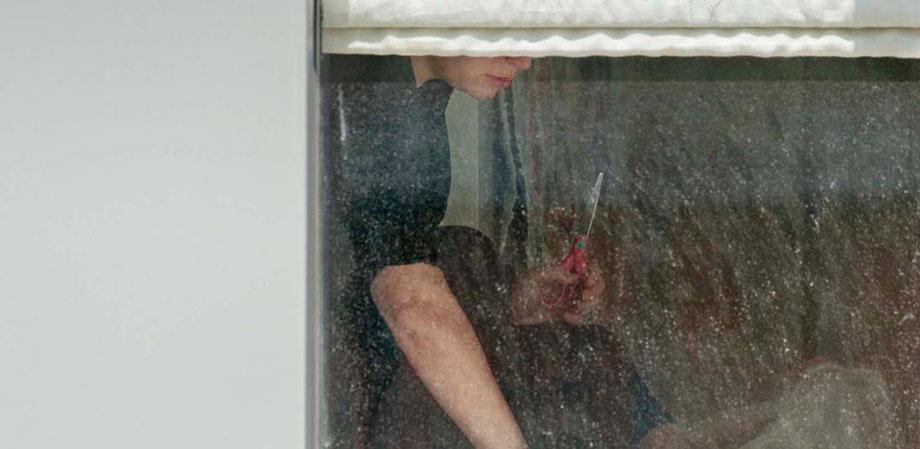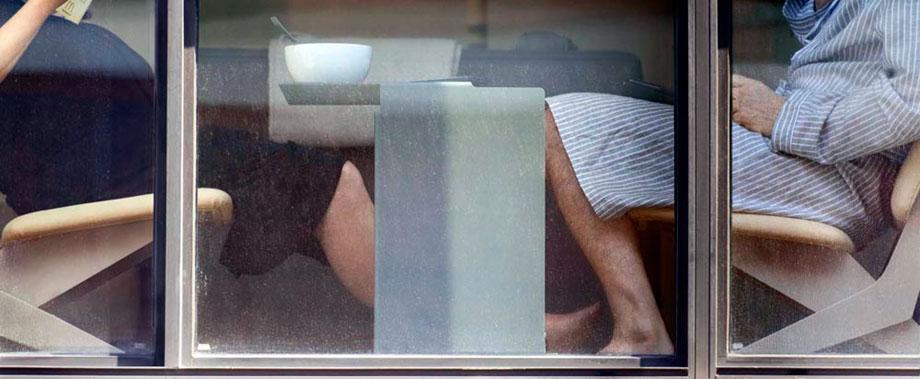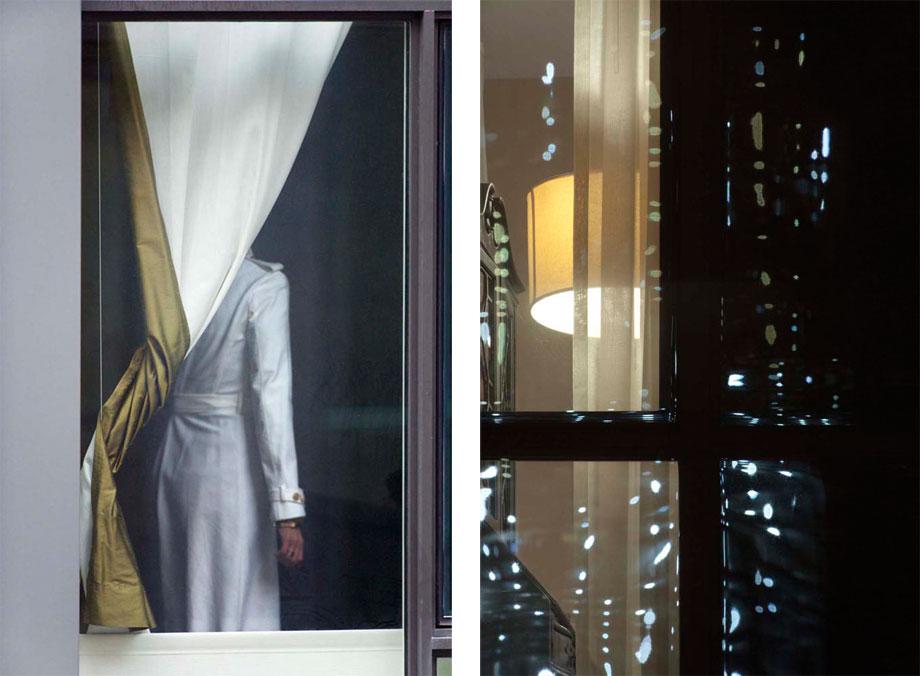There is a long history of photographers blurring the lines between voyeur and documentarian, specifically when it comes to city living, both on the street and inside living spaces. Arne Svenson’s latest work, “The Neighbors” adds to the canon of blurring the lines of photographic voyeurism.
Walker Evans’ turned his lens on Depression-era New York City subway riders in a series of photographs. Gail Albert Halaban’s “Out My Window” embraced voyeurism in New York City looking inside apartment windows from a number of different buildings, while Merry Alpern’s “Dirty Windows” took a peek into the doings inside a sex club near Wall Street in the mid-1990s. Shizuka Yokomizo’s “Dear Stranger” series asked strangers in London to stand by their windows at a specific time so she could take their pictures. Michael Wolf’s “Tokyo Compression” series looked at commuters in Tokyo, while Kohei Yoskiyuki snapped pictures of 1970s couples fooling around and the people who watched them in his series “Park.”
Svenson’s work, on view at Julie Saul Gallery through June 29, in many ways continues in the tradition of voyeuristic photography, this time focusing on one building directly across from Svenson’s home in Tribeca.

Arne Svenson Courtesy of the Julie Saul Gallery

Arne Svenson Courtesy of the Julie Saul Gallery
“I focused on only one building—namely because it was the one directly across from me,” Svenson wrote via email about the series. “This allowed me the opportunity for visual consistency of structure, building surface, and glass reflective quality. Oddly enough, the dirt on the surface of the glass became a crucial determinant of the color and style of the photographs—the diffusion and color distortion of the city grit give the photos an almost painterly quality.”
Svenson began the project after he inherited a bird-watching telephoto lens from a friend. The lens provided him with the technology; the rest was the result of living and working as an artist in New York City. He explains:
“New Yorkers are masters of being both the observer and the observed. We live so densely packed together that contact is inevitable—even our homes are stacked facing each other. I have found this symbiotic relationship between the looker and the observed only here—we understand that privacy is fluid and that glass truly is transparent.
It shouldn’t be surprising that street photography was born here, and that the most iconic works are of those who didn’t know they were being observed. Think of the nurse and soldier kissing in Times Square. That’s iconic New York.”

Arne Svenson Courtesy of the Julie Saul Gallery (2)
Since the opening of the show, there has been an element of controversy, mostly from neighbors in the building who feel their privacy was invaded. Svenson wrote that he has fully protected their privacy:
“The people I photographed were not aware at the time. That said, I have been committed to protecting their privacy—and stringent about not revealing their identities. I was not photographing them as specific, identifiable personages, but more as representations of humankind, of us. And specifically the ‘us’ who live in New York. Therefore, I only reveal the turn of the head, the back against a window, the legs under a table.”

Arne Svenson Courtesy of the Julie Saul Gallery (2)
